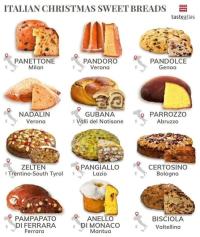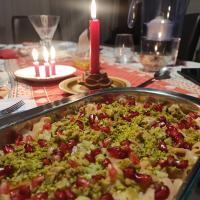Copy Link
Add to Bookmark
Report
Lambic Digest #0458

From postmaster at lance.colostate.edu Sat Oct 1 03:27:22 1994
Status: O
X-VM-v5-Data: ([nil t nil nil nil nil nil nil nil]
["8728" "Sat" " 1" "October" "1994" "00:30:12" "-0600" "subscription requests only" "lambic-request at lance.colostate.edu" nil "221" "Lambic Digest #458 (October 01, 1994)" "^From:" nil nil "10" nil nil nil nil]
nil)
Received: from longs.lance.colostate.edu by goodman.itn.med.umich.edu with SMTP id AA13909
(5.65b/IDA-1.4.3 for spencer at hendrix.itn.med.umich.edu); Sat, 1 Oct 94 03:27:19 -0400
Received: (daemon at localhost) by longs.lance.colostate.edu (8.6.9/8.6.5a (LANCE 1.01)) id AAA12417 for reallambic at longs.lance.colostate.edu; Sat, 1 Oct 1994 00:30:12 -0600
Message-Id: <199410010630.AAA12417 at longs.lance.colostate.edu>
Reply-To: lambic at lance.colostate.edu (postings only - do not send subscription requests here)
Errors-To: lambic-request at lance.colostate.edu
From: lambic-request at lance.colostate.edu (subscription requests only - do not post here)
To: lambic at lance.colostate.edu
Subject: Lambic Digest #458 (October 01, 1994)
Date: Sat, 1 Oct 1994 00:30:12 -0600
Lambic Digest #458 Sat 01 October 1994
Forum on Lambic Beers (and other Belgian beer styles)
Mike Sharp, Digest Coordinator
Contents:
books, bottling, hplc (ROB THOMAS)
Re: Lambic Digest #457 (September 30, 1994) (ptimmerm)
Re: Does Boon Filter (Martin Wilde)
filtered or unfiltered? (Todd Gierman)
blending (Todd Gierman)
Send article submissions only to: lambic at longs.lance.colostate.edu
Send all other administrative requests (subscribe/unsubscribe/change) to:
lambic-request at longs.lance.colostate.edu
Back issues are available by mail; send empty message with subject 'HELP' to:
netlib at longs.lance.colostate.edu
Phil Seitz' series on Brewing Belgian Beer is available; the index
from the archives lists individual topics and the complete set.
Start with the help message above then request the index.
A FAQ is also available by netlib; say 'send faq from lambic' as the
subject or body of your message (to netlib at longs.lance.colostate.edu).
----------------------------------------------------------------------
Date: Fri, 30 Sep 1994 13:51:44 +0100
From: thomasr at ezrz1.vmsmail.ethz.ch (ROB THOMAS)
Subject: books, bottling, hplc
Hello all,
Firstly, Mike, is the De Clerq available through the aha? And how
much is it?
Secondly, also Mike, you mentioned some bottled batches. Can we have
a description of the aging effects? Like how long to carbonate and clear,
methods of corking/capping, effect of age on esters/acids.
Basically everything you've noticed.
OK, enough pestering Mike, now Martin Lodahl's turn.
Let us in on the mysterious post on r.c.b from australia about
HPLC results. I'd be interested, as I'm sure Mike would, if
anyone is analysing dextrins.
Finally, my 2 rappen worth about BOON filtering. I just got a new
batch of gueuze and kriek. The kriek has essentially no sediment,
and the gueuze has decidedly less that the previous load I got.
I suspect they may both be roughly filtered, and the sediment is
precipitated after bottling the "clear" beer.
And finally-finally, I bottled 10 litres of kriek in splits
and corked half with plastic champagne bungs and half with
wine corks. Unfortunately, the corks couldn't be persuaded to
only go half in, it was all or nothing, so the cages don't fit.
Finally after messing about with pliers etc, I got the cages to
go on, but I don't recommend doing this if you're bottling 5 gallons,
as you'll be there all night!
happy infestations,
Rob.
------------------------------
Date: Fri, 30 Sep 94 08:46:06 PDT
From: ptimmerm at mashtun.JPL.NASA.GOV
Subject: Re: Lambic Digest #457 (September 30, 1994)
(korz at iepubj.att.com) Algis R Korzonas writes on Boon filtration
Perhaps Don could give us more details, but what I recall from our
conversation of about a year ago, Frank Boon filters his basic
Kriek and Framboise but not the Gueuze. I don't recall about the
Faro, but yes, given it's sweetness, you would imagine that it may
also be filtered and sweetened.
Al.
The "normal" bottling of kriek, gueuse, and framb are ALL filtered,
as of June when I was there. Frank does NOT filter any of the
Mariage Parait line of products. I did not discuss with him the faro,
but it has to be filtered, or you would get bottle bombs. I think
it is incorrect to assume anything but the Faro is sweetened. I
brought back samples of most of his beers, purchased nearby Lembeek,
in St. Genesis Rode, and none of them is even vaugely sweet. He is
trying to make dry beers, not sweet ones.
I will post by article on the brewery soon, but I've said that before
:-}
Paul Timmerman
------------------------------
Date: Fri, 30 Sep 94 08:03:04 PST
From: Martin Wilde <Martin_Wilde at ccm.jf.intel.com>
Subject: Re: Does Boon Filter
Text item: Text_1
In Digest #457, Al Korzonas asks:
> Frank Boon filters his basic Kriek and Framboise but not the Gueuze.
> I don't recall about the Faro, but yes, given it's sweetness, you
> would imagine that it may also be filtered and sweetened.
> Al.
For the Kriek, Framboise, and Faro, Mr. Boon racks the lambic into big
fermenters and adds the fruit. After a while the contents are then
pumped into chilled tanks to condition. The lambics are then filtered
and bottled.
martin
------------------------------
Date: Fri, 30 Sep 1994 12:38:52 -0500
From: tmgierma at acpub.duke.edu (Todd Gierman)
Subject: filtered or unfiltered?
Al wrote:
>Perhaps Don could give us more details, but what I recall from our
>conversation of about a year ago, Frank Boon filters his basic
>Kriek and Framboise but not the Gueuze. I don't recall about the
>Faro, but yes, given it's sweetness, you would imagine that it may
>also be filtered and sweetened.
Suprisingly, the CAMRA guide claims that the Gueuze is sweetened slightly.
At one time the Gueuze was clearly not filtered, as Brett and various bugs
(some really weird ones too) could be pulled easily from the dregs.
However, around last December, what you got in a bottle was clearly
different from what you got before. Gone is the Brettanomyces and a really
long filamentous bacterium (no a lacto), what remains is a smaller
lactobacillus and a _heavy_ dose of S. cerevisiae. So if it is big enough
to be trapped by a filter, it's gone. Where does the S. cerevisiae come
from? Hmmm...
There was a claim that the blending process has been
altered. However, this still doesn't explain the profile of the microflora
adequately, IMHO. Also, having examined what's in the Faro on (3 different
bottles, from presumably 3 different batches) it's clear that Frank is
either experimenting or having real problems with consistency. The first
sample was great! More like a very balanced Gueuze - nice and sour with
some residual sweetness. This one was full of Brett and no S. cerevisiae.
More recently, I have had a bottle that was similar to the first, but full
of dead Brett. And I have had a bottle of really awful faro that was so
insipid you wouldn't believe it came from Boon. The dregs were full of S.
cerevisiae, no Brett. It is clear that if you want stability, you need to
get rid of the Brett. That way you don't have to guess how much your
product will change. If you want to maintain a "refermentation" to satisfy
purists, then you include S. cerevisiae to give a visible sediment and
natural carbonation. In the end, stability is enhanced. Is this what Jim
Liddil was referring to when he used the term "blandification"?:-)
Todd
------------------------------
Date: Fri, 30 Sep 1994 15:55:07 -0500
From: tmgierma at acpub.duke.edu (Todd Gierman)
Subject: blending
Rick asks concerningmy effort at blending:
>Todd,
> Could you elaborate any of your thoughts on this topic? I'm
>contemplating something similar. Has anyone else any experience at
>blending old and young brews? Do you intend to pitch fresh critters at
>bottling as well?
Well, this will obviously be the trial run. My thoughts are that this may
be a way to instill some complexity and to turn three mediocre batches into
one decent batch (lead to gold). Besides you can't call it gueuze if you
haven't blended it (ahem). I am basically following what I will call the
"5 and 10 rule" of p-lambic brewing. Basically, brew 5 gallons to start
and then 10 later on. Do separate 5-gallon ferments from the 10. Blend
them and then blend 5 gallons of this with the "old" stuff. Retain 5
gallons of blended young to become old and repeat until your wife can't
take it anymore.
I figure that the young lambic will contribute a small amount of
carbonation depending on the gravity at time of blending. I will figure
that the gravity will probably drop overall to 1004, maybe less with
extended time frame. So, basically it becomes an exercise in carbonation
using "unfermented" wort (yes, I will need that equation - if anyone has
one more accurate than Papazian's, please send it). I suspect that this
will not give me the spritziness that I want and will supplement
accordingly with corn sugar (I am looking for champaigne bottles for added
strength).
I do not plan to supplement with S. cerevisiae at bottling. I will rely on
the Brett to do the carbonation. Certainly, Brett is capable of utilizing
the corn sugar rapidly. I hope too that as it ferments the corn sugar, it
will also produce some very noticeable Brett character in the bottle. The
refermentation of the blackberries that I have observed gives me little
doubt that plenty of critters remain (plus the ones that will come along
with the young p-lambic).
Todd
------------------------------
End of Lambic Digest
************************
-------























